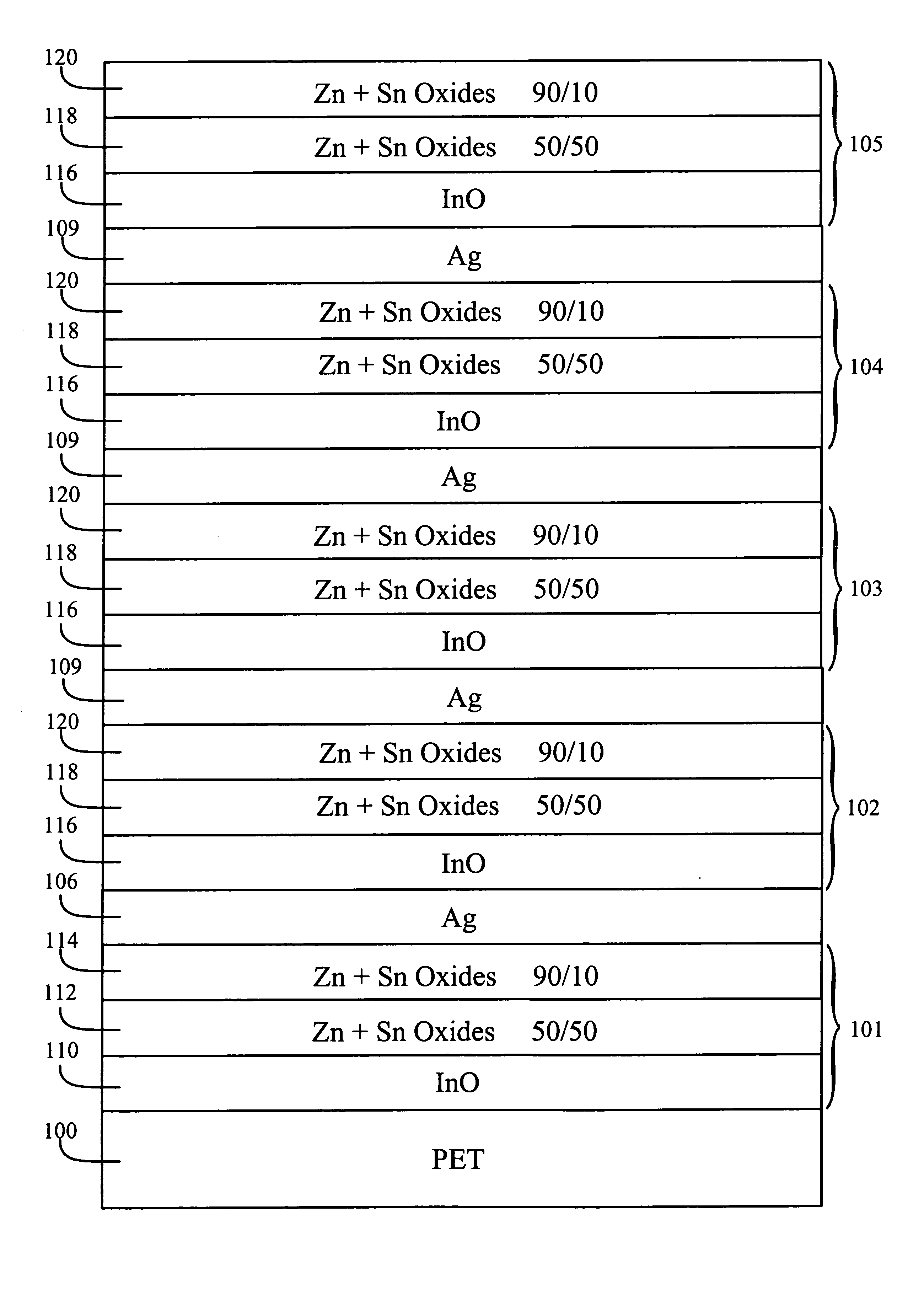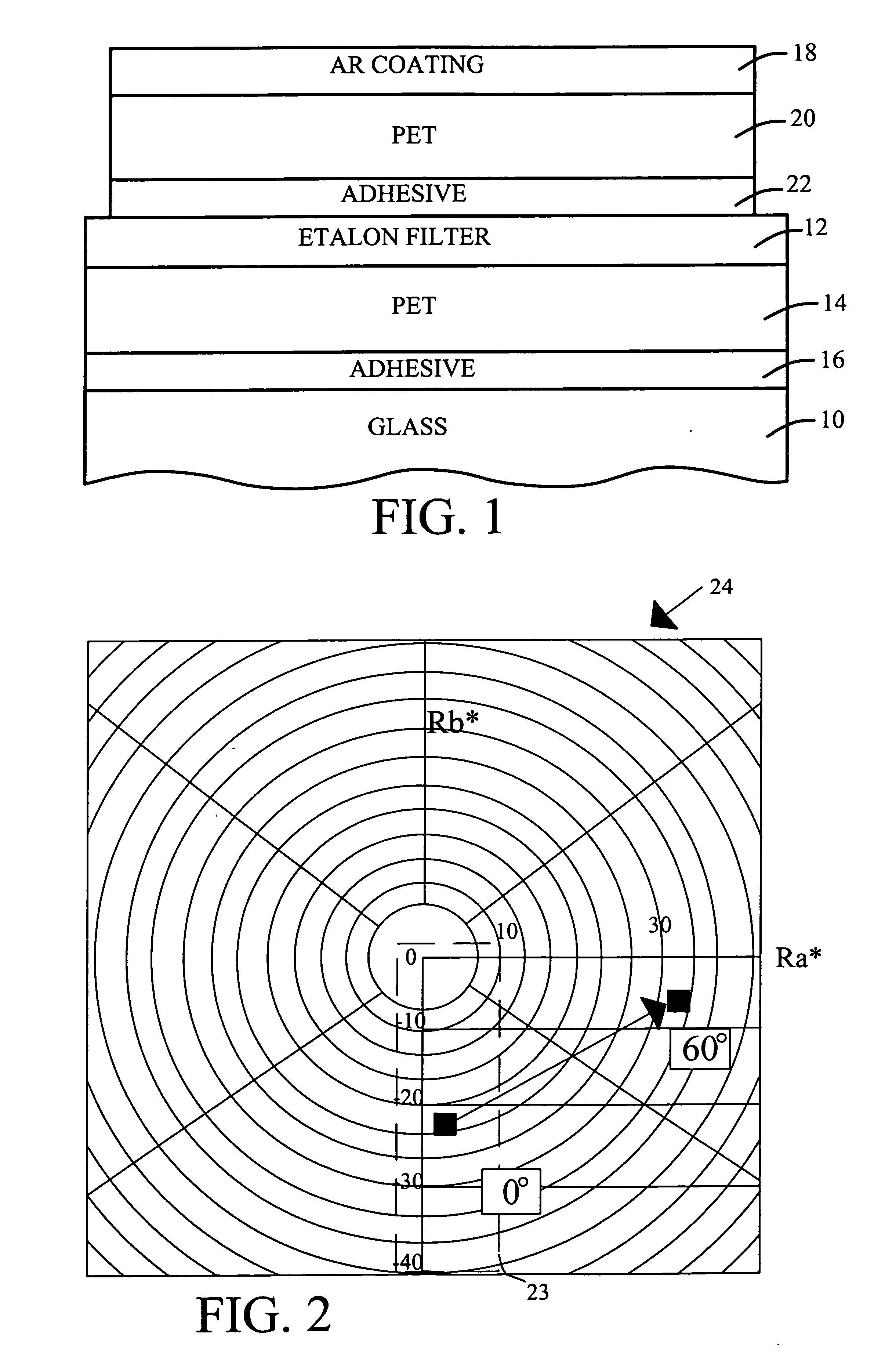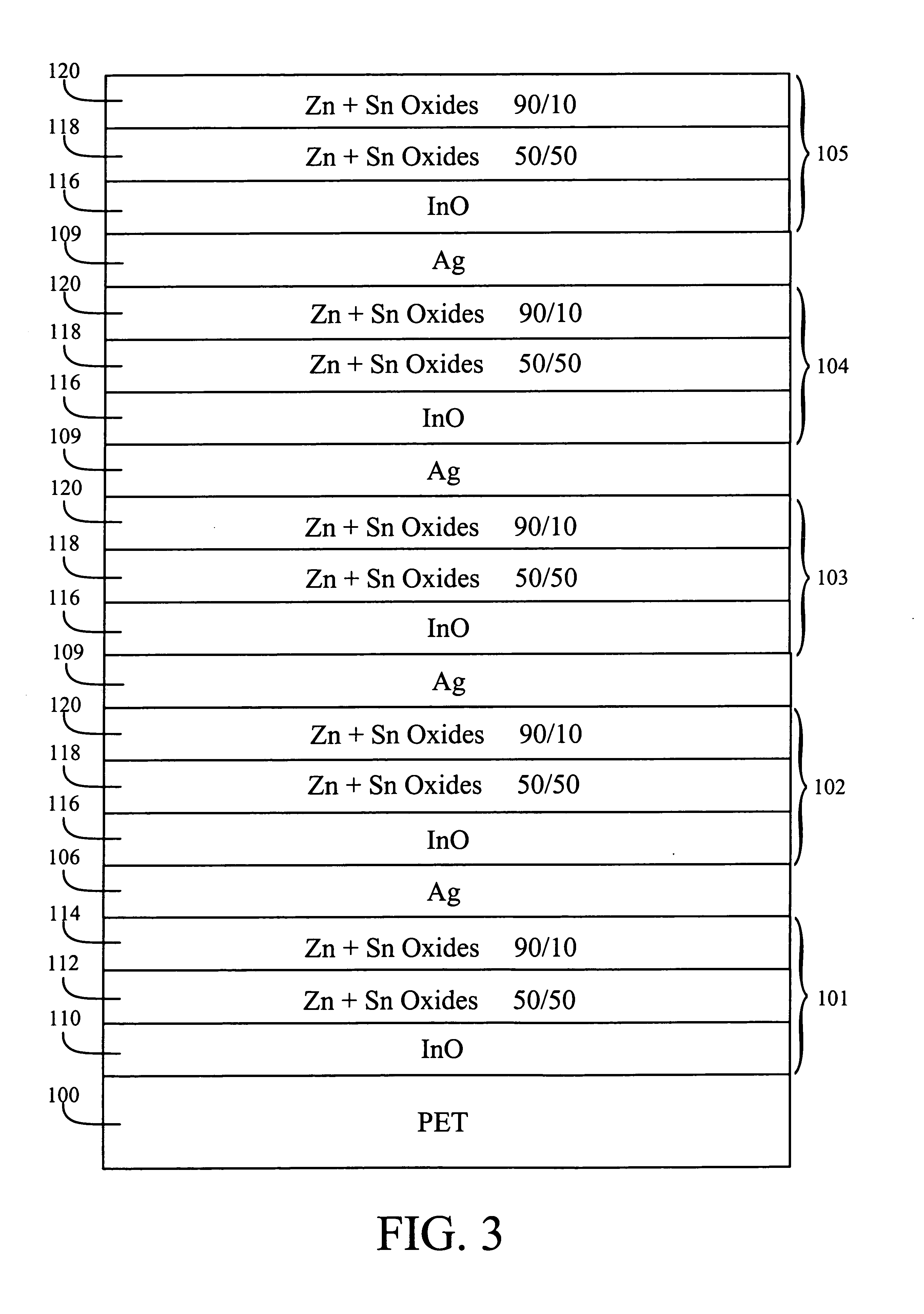Zinc-based film manipulation for an optical filter
a technology of optical filter and zinc film, applied in the direction of optical filter, optics, instruments, etc., can solve the problems of color change distracting, difficult to effectively control, and different factors regarding the design of pdp filter may conflict, and achieve the effect of stable process
- Summary
- Abstract
- Description
- Claims
- Application Information
AI Technical Summary
Benefits of technology
Problems solved by technology
Method used
Image
Examples
Embodiment Construction
[0025] With reference to FIG. 3, an alternating pattern of layers is formed on a flexible polymeric substrate 100. The polymeric substrate may be PET having a thickness of twenty-five to one hundred microns. While not shown in FIG. 3, the side of the substrate opposite to the alternating pattern may include a layer of adhesive and a release strip. The release strip is easily removed from the adhesive, allowing the adhesive layer to be used to couple a substrate and its layers to a member for which filtering is desired. For example, the filtering arrangement may be adhered to a plasma display panel or to a window. In another embodiment, the alternating pattern is formed directly on the member for which filtering is desired. For example, it may be necessary to pass the panel through a sputter chamber for depositing the materials which form the layers.
[0026]FIG. 3 illustrates the preferred embodiment in which there are five dielectric layers 101, 102, 103, 104 and 105 and four metal l...
PUM
| Property | Measurement | Unit |
|---|---|---|
| wavelength | aaaaa | aaaaa |
| sheet resistance | aaaaa | aaaaa |
| sheet resistance | aaaaa | aaaaa |
Abstract
Description
Claims
Application Information
 Login to View More
Login to View More - R&D
- Intellectual Property
- Life Sciences
- Materials
- Tech Scout
- Unparalleled Data Quality
- Higher Quality Content
- 60% Fewer Hallucinations
Browse by: Latest US Patents, China's latest patents, Technical Efficacy Thesaurus, Application Domain, Technology Topic, Popular Technical Reports.
© 2025 PatSnap. All rights reserved.Legal|Privacy policy|Modern Slavery Act Transparency Statement|Sitemap|About US| Contact US: help@patsnap.com



